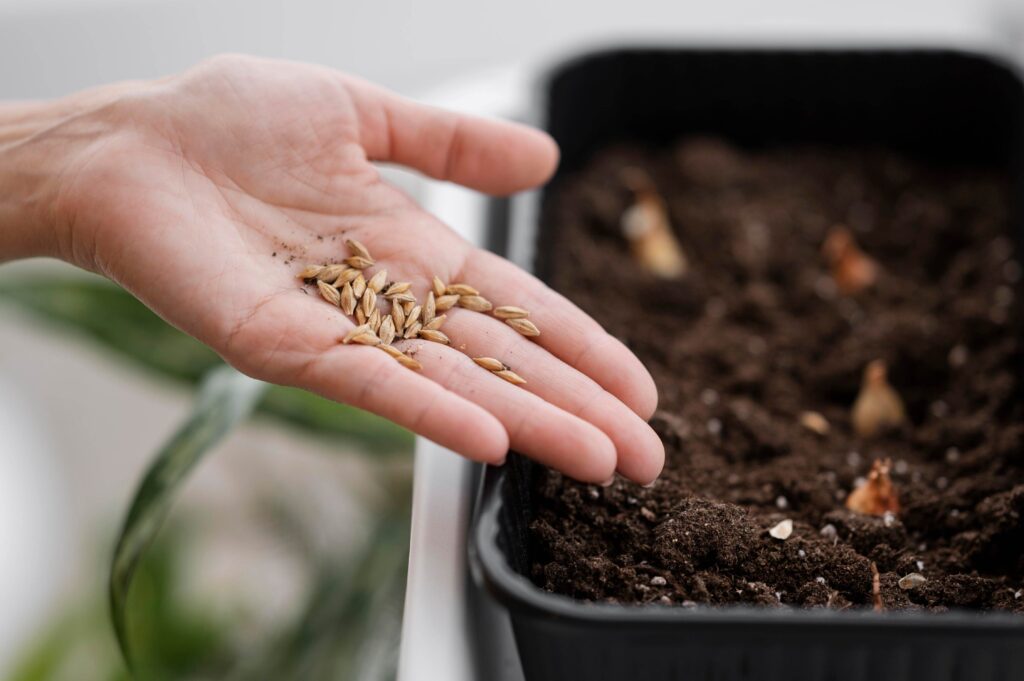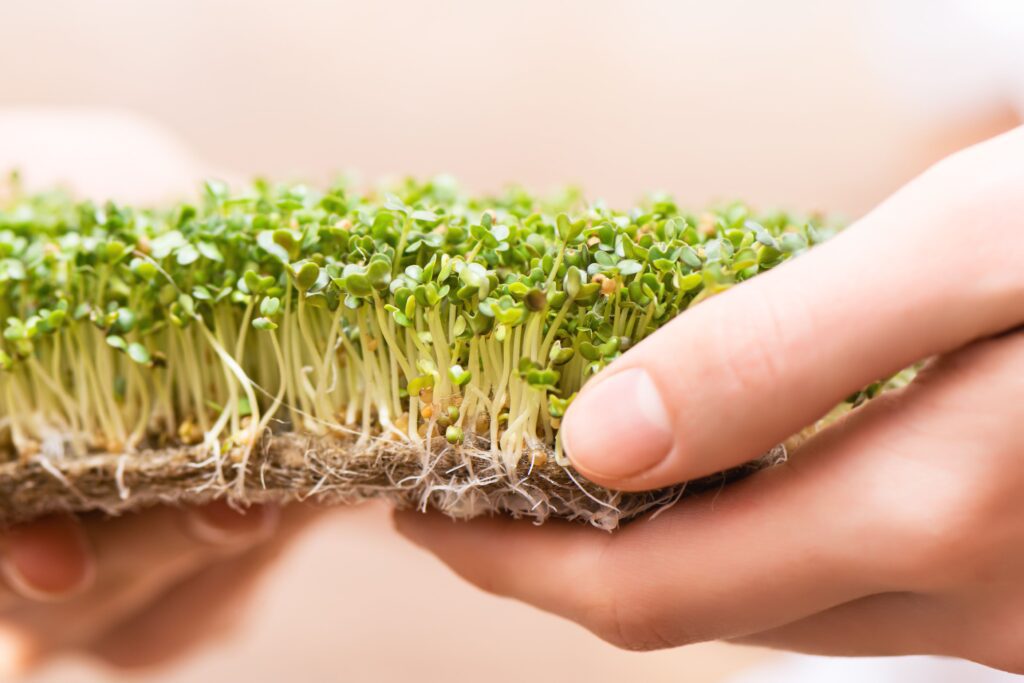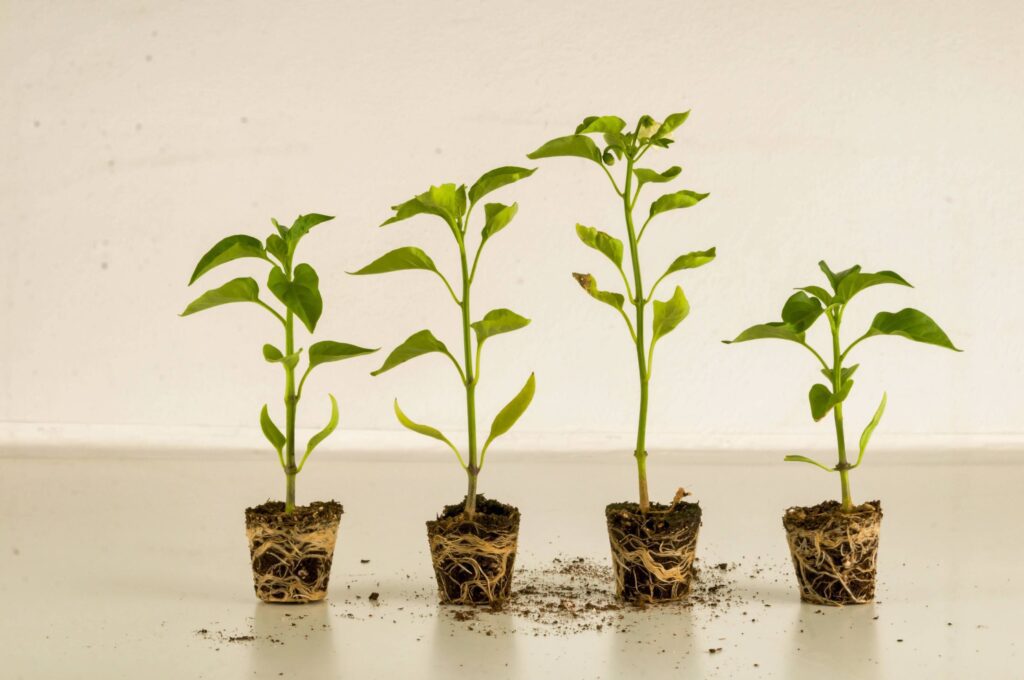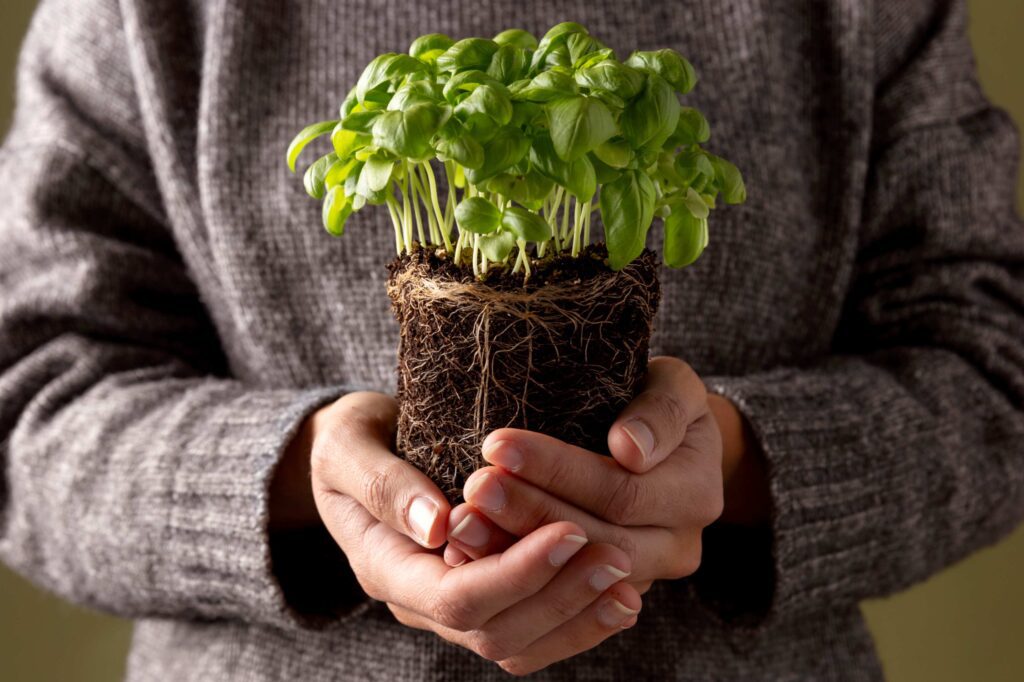
Have you been nurturing tiny green warriors in little trays on your windowsill? Those are your seedlings. Soon, they’ll be ready for a bigger adventure – their own pots or a spot in your garden! But transplanting, which is just a fancy word for moving them to a new home, can feel a bit scary. Don’t worry, because this guide will turn you into a transplanting pro in no time!
Why Transplant Seedlings?
- Seedlings start out small and cozy in their trays, but in the end, they’ll get cramped. Imagine residing in a tiny box all the time – now not perfect! Here’s why transplanting is exceptional to your little plant pals:
- Bigger pots mean more space for roots to spread out. This results in taller, stronger plants.
- Happy Nutrients: Fresh potting mix has a buffet of vitamins. Seedlings need them to thrive.
- Stronger Stems: When roots have more area to explore, the plant can focus on growing a strong stem.
- Air Circulation: Crowded trays can trap moisture, which could result in mould. Transplanting allows for better air stream around the seedlings.

When to Know It's Time to Transplant
- So, how do you know whilst your seedlings are geared up for a bigger world? Here are some clues:
- They’ve were given leaves. Most seedlings are equipped to move once they have at the least sets of real leaves. Those are the ones that appear like mature adult leaves, now not the first tiny ones.
- Your seedlings are getting leggy. They are stretching tall and skinny, leaning towards the light. This way they need more space for his or her roots.
- Roots Are Reaching for Freedom: Take a peek at the drainage holes to your seed trays. If you spot roots peeking out, it’s truely time to transplant!
Tip: Different plant life have exceptional transplanting timelines. Check the seed packet for when to move your seedlings. It has the particular tips.

7 Easy Options for Healthy Plants
1. Timing is Key
- One of the maximum important elements of transplanting seedlings is timing. Seedlings want to be transplanted once they have grown their first true leaves. But, they’re nonetheless young and no longer root-sure. Waiting too long can stunt growth. Transplanting too early can shock the seedlings. As a rule, maximum seedlings are ready to transplant 2-3 weeks after germination.
2. Prepare Your Seedlings
- Before transplanting, you need to gather your seedlings. Also, you must put together the brand new planting site. Water the seedlings properly. Do this a few hours earlier than transplanting to make sure they’re well-hydrated. Prepare the new area. Loosen the soil and upload needed amendments, like compost or fertilizer.
3. Choose the Right Container
- When transplanting seedlings, you have got numerous field alternatives to pick out from. Biodegradable pots, plastic pots, peat pots, and cell packs are all feasible choices. The pots are biodegradable and inexperienced. They may be planted at once into the soil. This reduces transplant surprise. Plastic pots last a long term and are reusable. Peat pots may be planted at once in the floor as they decompose. Cell packs are splendid for beginning more than one seedlings in a single tray.
4. Transplanting into Larger Pots
- If you are moving seedlings into massive pots, take the seedling out of its contemporary box. Do this by way of gently squeezing the rims or tapping the bottom. Put the seedling into the new pot on the same depth it become growing before. Fill in with fresh soil. Water thoroughly after transplanting to help settle the soil across the roots.
4. Direct Transplanting into the Ground
- For plants so one may be right now planted into the floor, prepare the soil as said earlier. Dig a hole simply larger than the seedling’s root ball. Then, location the seedling into the hollow. Backfill with soil and press gently across the bottom of the plant to cast off any air pockets. Water the newly transplanted seedling to help it establish in its new surroundings.
6. Harden Off Seedlings
- Before transplanting seedlings outdoors, it’s miles critical to harden them off. This manner involves regularly exposing the seedlings to outdoor. They will experience daylight, wind, and temperature adjustments. Start by placing the seedlings outdoor for some hours a day. Increase the time every week. This allows the seedlings acclimate to their new environment and reduces transplant surprise.
7. Water and Care for Transplanted Seedlings
- After transplanting, watering and care are crucial. They are vital for the fitness of your seedlings. Water the newly transplanted seedlings frequently. Keep the soil wet however no longer waterlogged. Watch for signs and symptoms of pressure, such as wilting or yellowing leaves. Adjust care thus. Providing adequate nutrients via fertilization also can promote wholesome increase.

Gear Up for Transplanting Day
- New Homes:Choose pots barely larger than your modern seedling trays. Bigger isn’t always better – pots which might be too massive can maintain onto an excessive amount of water.
- Potting Mix: Don’t use leftover lawn soil! Seedlings need a mild, well-draining blend that allows for right air move. Look for "seedling beginning mix" or "potting blend" at your neighborhood gardening save.
- A mild watering can has a first-rate rose attachment. It is good for giving your newly transplanted seedlings a drink.
- Spoon or Trowel: You’ll want some thing to scoop up the seedlings and potting blend.
- Pencil (Optional): This may be helpful for creating a small hole in the potting mix in your seedling.

Gentle Hands Make Happy Plants: Transplanting Time!
- Prep the Pots:Fill your new pots with the potting blend, leaving about an inch of area from the rim. more
- Water the seedlings in their trays well. Do this about half-hour before transplanting. This will cause them to simpler to address and encourage the roots to stay intact.
- Scoop Carefully: Use your spoon or trowel to softly raise one seedling at a time. Try to get as lots of the foundation ball as viable.
- Make a New Nest: In the new pot, use your finger or pencil to make a hollow. It should be slightly deeper than the basis ball of the seedling.
- Settle them in. Place the seedling in the hole and lightly fill the pot with extra potting mix. Make sure to protect the bottom of the stem but don’t bury the leaves.
- Water Wisely: Give your new seedlings a good drink. But, don’t overwater. The purpose is to moisten the soil, not create a puddle.
- Tip: Transplant seedlings on a cloudy day or in the colour if feasible. This will assist lessen stress on the sensitive plant life.
In conclusion, you don’t have to make transplanting seedlings complicated. To ensure healthy plants in your garden, follow these seven easy steps. Pay attention to timing, preparation, containers, and care. Happy gardening!

